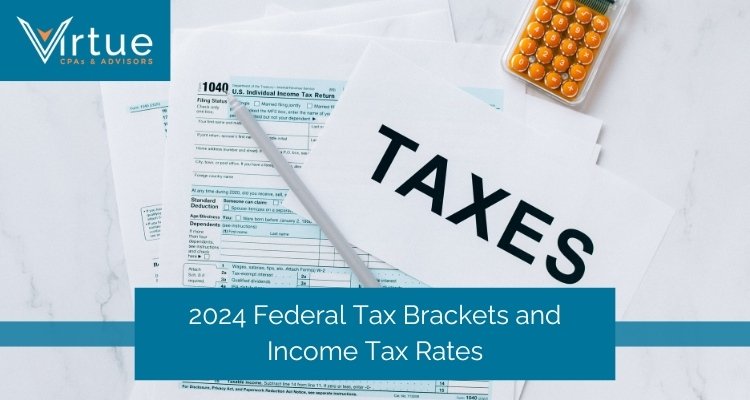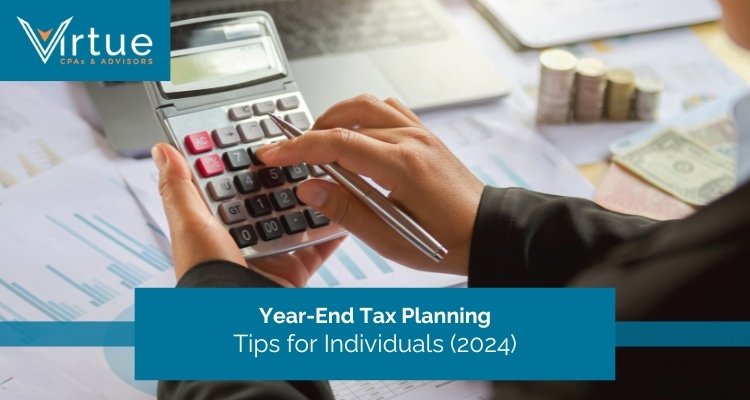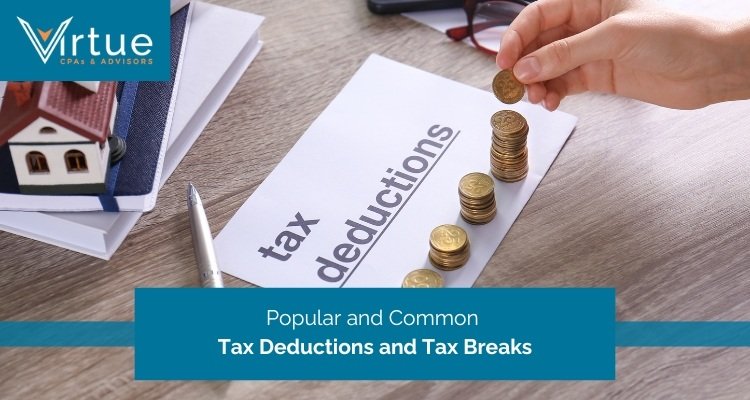Are you trying to understand how much you'll owe in taxes this year?
You're not alone.
Understanding federal tax brackets can feel like trying to solve a complex puzzle, but it doesn't have to be that way. Whether you're a seasoned taxpayer or filing for the first time, this comprehensive guide will help you navigate the 2024 tax landscape with confidence.
In this article, you'll learn everything you need to know about tax brackets, how they affect your bottom line, and smart strategies to optimize your tax situation.
What is Tax Bracket?
When you hear people talking about US tax brackets, they're referring to the different rates at which your income is taxed based on how much you earn.
Think of tax brackets as buckets that hold different portions of your income, with each bucket having its own tax rate.
The U.S. uses a progressive tax system, meaning that as you earn more money, you'll pay a higher rate on those additional dollars.
However, and this is crucial to understand, moving into a higher tax bracket doesn't mean all your income is taxed at that higher rate – only the portion that falls within that bracket.
For example, if you're single and earn $50,000 in 2024, you won't pay the same tax rate on every dollar. Instead, your income is divided into different brackets, with each portion taxed at its corresponding rate.
This system has been designed to create what many consider a fairer tax structure, where those who earn more contribute a larger percentage of their income in taxes.
Different filing statuses affect which tax brackets apply to you. These statuses include:
- Single
- Married filing jointly
- Married filing separately
- Head of household
What is Income Tax Rate?
When discussing income tax brackets, it's essential to understand two key concepts:
- Marginal tax rate
- Effective tax rate
Your marginal tax rate is the percentage you pay on your last dollar of income – it's the tax bracket into which your highest income falls. On the other hand, your effective tax rate is the average percentage you pay across all your income after considering all the different brackets.
Various types of income are subject to taxation:
- Earned income from your job or self-employment
- Investment income from stocks, bonds, and other securities
- Rental income from property
- Interest earned from savings accounts
- Business income
Each type of income might be taxed differently, which is why understanding your tax rates is crucial for financial planning. For instance, long-term capital gains from investments are typically taxed at lower rates than regular earned income.
How Do Tax Brackets and Income Tax Rates Work?
Let's break down how income taxes actually work with a simple example.
Imagine you're single and earned $75,000 in 2024. Your income doesn't all get taxed at one rate. Instead, it gets taxed in chunks according to the brackets.
Here's a simplified version of how it works:
- The first portion gets taxed at 10%
- The next portion at 12%
- The next at 22%
- And so on
Your taxable income is what's left after you've taken all your deductions and credits. This is an important distinction because your gross income (what you actually earned) is usually higher than your taxable income (what you're actually taxed on).
The Alternative Minimum Tax (AMT) is another layer to consider, though it typically only affects higher-income earners or those with certain types of income or deductions.
It was designed to ensure that taxpayers with substantial income can't use too many deductions to avoid paying taxes entirely.
How Do Tax Brackets and Rates Work on the State Level?
While we've focused on federal tax brackets, state taxes add another layer to your tax picture. Each state has its own approach to income tax:
- Some states, like California and New York, use their own progressive tax bracket systems
- Other states, like Illinois and Michigan, charge a flat tax rate on all income
- Nine states, including Florida and Texas, don't charge any state income tax at all
For example, if you live in California, you'll need to pay both federal taxes and state taxes based on different bracket systems.
This means your total tax bill includes both what you owe to the federal government and what you owe to your state.
What is a Marginal Tax Rate?
Your marginal tax rate is the percentage you pay on your "last dollar" of income.
Think of it this way: if you got a $1 raise, your marginal tax rate tells you how much of that dollar would go to taxes.
Here's a simple example:
If you're single and your taxable income is $50,000 in 2024, your marginal tax rate is 22%. This means any additional dollar you earn will be taxed at 22% until you reach the next bracket.
However—and this is important—this doesn't mean all your income is taxed at 22%.
What is an Effective Tax Rate?
Your effective tax rate is the actual percentage of your total income that you pay in taxes.
It's usually lower than your marginal rate because of how progressive tax brackets work.
Here's how to calculate it:
Total Tax Paid ÷ Total Taxable Income = Effective Tax Rate
For example, if you paid $5,000 in taxes on $40,000 of taxable income, your effective tax rate would be 12.5% ($5,000 ÷ $40,000 = 0.125 or 12.5%).
What is Average Tax Rate?
The average tax rate is similar to the effective tax rate, but it looks at your total income before any deductions or adjustments.
Here's the formula:
Total Tax Paid ÷ Total Gross Income = Average Tax Rate
For example, if you paid $5,000 in taxes and your total income before deductions was $45,000, your average tax rate would be 11.1% ($5,000 ÷ $45,000 = 0.111 or 11.1%).
Let's break down the difference between these rates with a simple example:
Imagine you're single and earn $60,000 in 2024:
- Your marginal tax rate would be 22% (the bracket you're in)
- Your effective tax rate might be around 13% (actual taxes paid divided by taxable income)
- Your average tax rate might be around 11% (actual taxes paid divided by gross income)
Understanding these different rates helps you:
- Better plan for your tax obligations
- Make informed decisions about additional income
- Understand how deductions and credits affect your actual tax burden
- Compare your tax situation from year to year
Single Filer Brackets
| Tax Rate | Taxable Income Range |
|---|---|
| 10% | $0 - $11,600 |
| 12% | $11,601 - $47,150 |
| 22% | $47,151 - $100,525 |
| 24% | $100,526 - $191,950 |
| 32% | $191,951 - $243,725 |
| 35% | $243,726 - $609,350 |
| 37% | $609,351 or more |
Married Filing Jointly Brackets
| Tax Rate | Taxable Income Range |
|---|---|
| 10% | $0 - $23,200 |
| 12% | $23,201 - $94,300 |
| 22% | $94,301 - $201,050 |
| 24% | $201,051 - $383,900 |
| 32% | $383,901 - $487,450 |
| 35% | $487,451 - $731,200 |
| 37% | $731,201 or more |
Married Filing Separately
| Tax Rate | Taxable Income Range |
|---|---|
| 10% | $0 - $11,600 |
| 12% | $11,601 - $47,150 |
| 22% | $47,151 - $100,525 |
| 24% | $100,526 - $191,950 |
| 32% | $191,951 - $243,725 |
| 35% | $243,726 - $365,600 |
| 37% | $365,601 or more |
If you're married but choosing to file separately from your spouse, here are your 2024 tax brackets:
Head of Household Brackets
| Tax Rate | Taxable Income Range |
|---|---|
| 10% | $0 - $16,550 |
| 12% | $16,551 - $63,100 |
| 22% | $63,101 - $100,500 |
| 24% | $100,501 - $191,950 |
| 32% | $191,951 - $243,700 |
| 35% | $243,701 - $609,350 |
| 37% | $609,351 or more |
Special Considerations
One important factor for 2024 is the inflation adjustment. The IRS adjusts tax brackets annually to prevent "bracket creep," where inflation rather than real income increases pushes you into higher tax brackets.
These adjustments help ensure you're not paying more in taxes simply because of inflation.
Are Income Tax Brackets Adjusted?
Yes, tax brackets are adjusted regularly to account for inflation.
This process, known as "inflation indexing," happens every year and helps prevent what tax experts call "bracket creep." Here's what you need to know:
- The IRS uses the Consumer Price Index to determine how much to adjust the brackets
- Adjustments usually happen in late fall for the following tax year
- These adjustments help ensure you don't pay higher tax rates just because of inflation
- For 2024, brackets were adjusted upward by about 5.4% from 2023
Strategies to Lower Your Taxes Owed
Here are some of the best strategies you can implement to reduce the amount of taxes owed.
Income Planning Strategies
Nowadays, you have several tools at your disposal to reduce your taxable income.
Contributing to retirement accounts like 401(k)s and traditional IRAs can lower your taxable income for the year. For 2024, you can contribute up to $23,000 to a 401(k), or $30,500 if you're 50 or older.
Health Savings Accounts (HSAs) offer another excellent opportunity.
If you have a high-deductible health plan, you can contribute pre-tax dollars to an HSA and use the money tax-free for qualified medical expenses.
For 2024, individuals can contribute up to $4,150, and families can contribute up to $8,300.
Deduction Optimization
When it comes to deductions, you have two choices: take the standard deduction or itemize.
For 2024, the standard deduction is:
- $14,600 for single filers
- $29,200 for married filing jointly
- $21,900 for head of household
If your itemized deductions exceed these amounts, you might save more by itemizing.
Common itemized deductions include:
- Mortgage interest
- State and local taxes (up to $10,000)
- Charitable contributions
- Medical expenses exceeding 7.5% of your adjusted gross income
Tax Credits
Tax credits are particularly valuable because they reduce your tax bill dollar-for-dollar.
Some key credits for 2024 include:
- Child Tax Credit - Up to $2,000 per qualifying child
- Earned Income Tax Credit - Amount varies based on income and number of children
- American Opportunity Credit - Up to $2,500 for qualified education expenses
- Residential Clean Energy Credit - Up to 30% of the cost of solar installations and other renewable energy improvements
Investment Strategies
Smart investment strategies can significantly impact your tax bill. You can consider:
- Holding investments longer than a year to qualify for lower long-term capital gains rates
- Tax-loss harvesting to offset capital gains
- Investing in municipal bonds for tax-exempt income
- Maximizing qualified dividend income, which is taxed at lower rates than ordinary income
Business Owner Considerations
If you're a business owner, you have additional opportunities to manage your tax liability:
- Choose the right business structure (LLC, S-Corp, etc.)
- Take advantage of the Qualified Business Income Deduction
- Set up a self-employed retirement plan
- Time your income and expenses strategically
Conclusion
Understanding tax brackets and rates is more than just knowing the numbers—it's about making informed financial decisions that can significantly impact your bottom line.
While we've broken down the complexities of the 2024 tax system, every individual's tax situation is unique and requires personalized attention.
This is where VirtueCPAs comes in. As your dedicated tax partner, we go beyond basic tax preparation to offer comprehensive tax planning strategies tailored to your specific situation.
Ready to take control of your tax situation? Schedule a free consultations with VirtueCPAs today.





